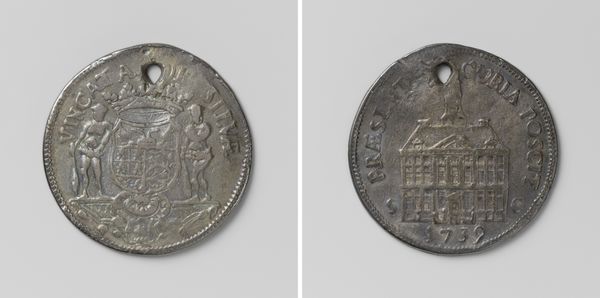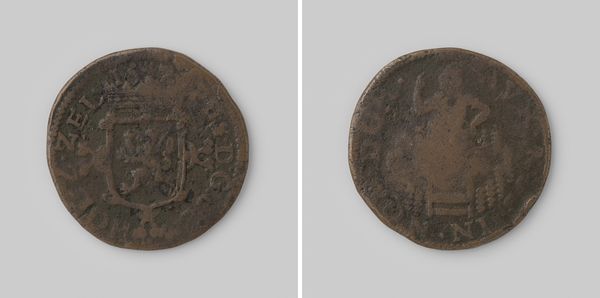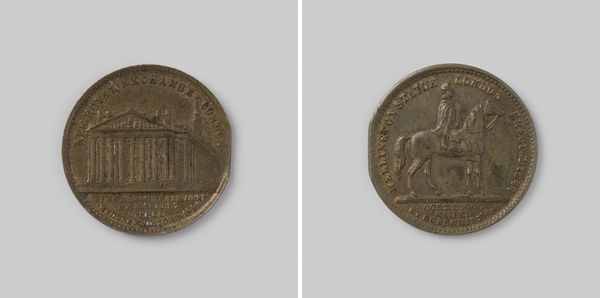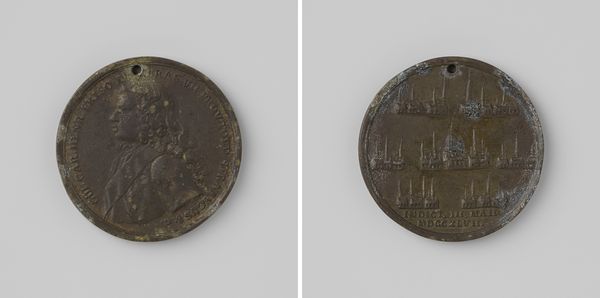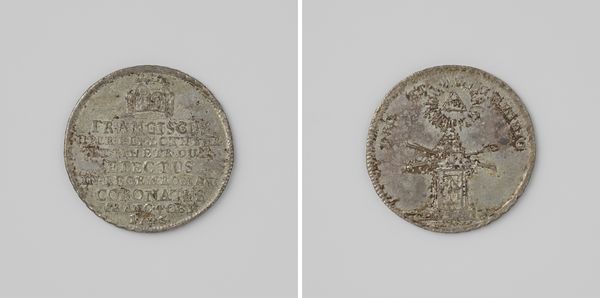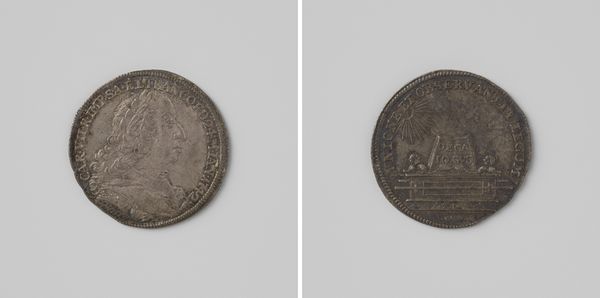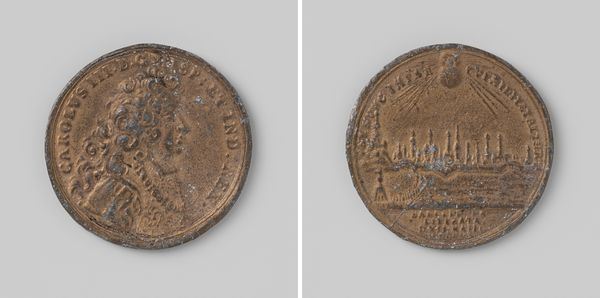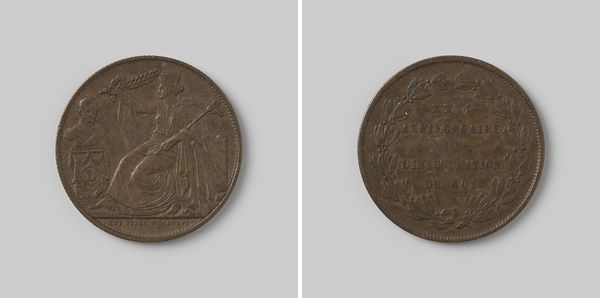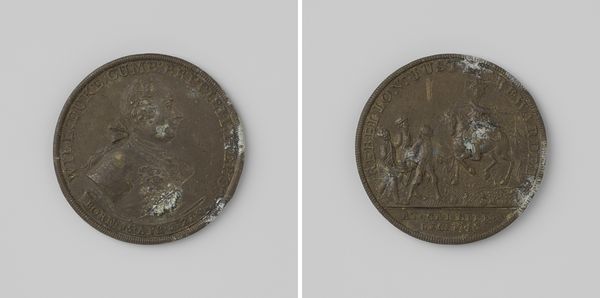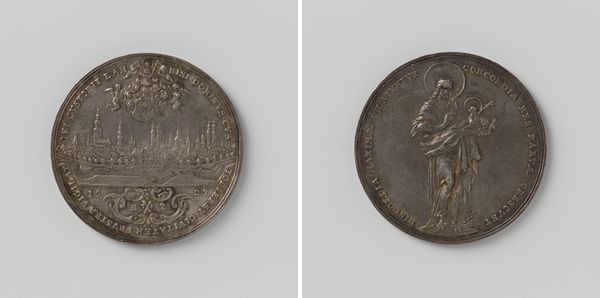
metal, relief, sculpture
#
portrait
#
metal
#
relief
#
11_renaissance
#
sculpture
#
history-painting
Dimensions: diameter 3.5 cm, weight 27.81 gr
Copyright: Rijks Museum: Open Domain
Curator: This metal relief sculpture, dating back to 1550, commemorates the Jubilee Year announced by Pope Julius III. What’s your immediate impression of this object? Editor: Stark, almost austere. The metal is worn, which gives it a somber feeling, though I'm intrigued by how something so small seeks to convey immense religious and political power. Curator: The piece offers insight into how the papacy projected its authority. On one side, we have a portrait of Julius III himself. The other side depicts a stylized representation of a key place for his papacy. How do these images function together? Editor: It’s classic propaganda, isn’t it? The stern, authoritative figure of the Pope juxtaposed with a symbolic representation of the church's physical presence. The pairing attempts to solidify his personal authority with the enduring power of the Catholic Church, strategically imprinting Julius's image in the minds of people across papal states and beyond. Curator: Precisely. The Jubilee was a key event, drawing pilgrims and their wealth to Rome. Artworks such as this, often distributed to visitors or dignitaries, amplified the impact, serving as souvenirs and subtle endorsements. It’s fascinating to think of its distribution methods. Editor: It's impossible to overlook the inherent politics in Jubilee Years – these aren’t merely religious observations but tools of influence, impacting everything from indulgences and economic incentives, to colonial endeavors. So it goes to underscore the complex historical entanglements behind this artifact. Curator: Absolutely. It embodies both personal branding of the papacy and Rome’s dominance at the time. A souvenir, but also a token, meant to embody faith, devotion, and most of all, obedience. It speaks volumes about Renaissance Rome's delicate dance between piety and earthly authority. Editor: And thinking about that very intersection lets us rethink its relevance in the present moment: it prompts conversations around the entanglement of spirituality and authority, which certainly carries a potent weight, no matter one’s faith. Curator: Indeed, the interplay between religious belief, material culture, and political power is never outdated. It continues to impact people’s identities to this very day.
Comments
No comments
Be the first to comment and join the conversation on the ultimate creative platform.

